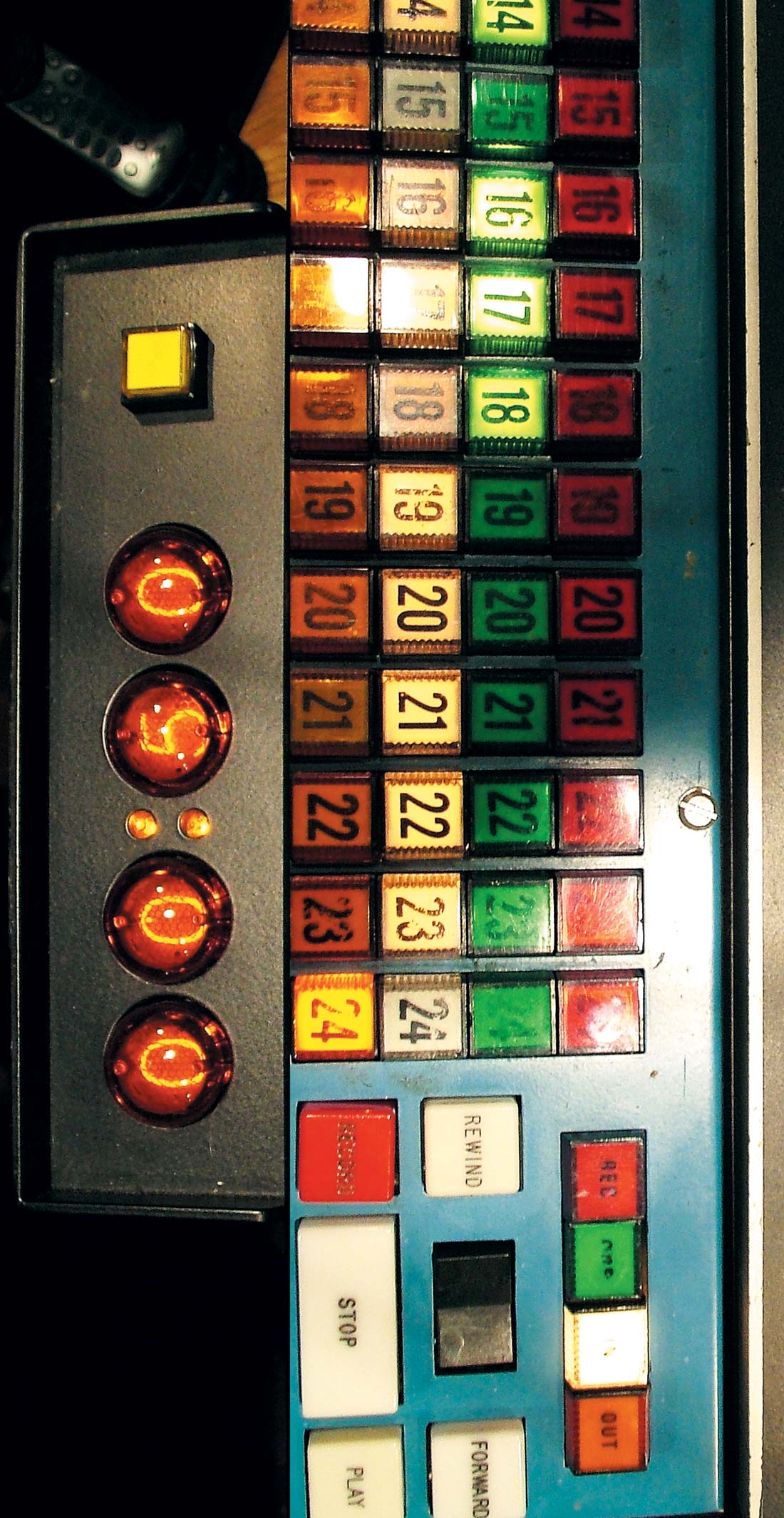I'm sure most Tape Op readers know that the summing wars are really heating up. As widely discussed in these pages and at TapeOpCon for the last few years, summing devices, such as the Roll Music Folcrom and the Dangerous Music 2-BUS, have set the stage for the onslaught of devices that allow you to utilize all of the available outputs on your audio interface during mixdown. Smart companies like Audient, a European console maker making inroads in the US, are taking their expertise in analog-audio design and joining the fray.
Based on the heart and guts of their flagship ASP8024 console, the Sumo is a "just what you need" type of box for those of us working solely with DAW's. It features a 16- input mix buss, an onboard compressor/limiter, and basic monitoring controls. The unit that I had for this review was also fitted with the optional 192 kHz capable A/D converter card, an option that I could hardly imagine the Sumo without. The converter is definitely the "dark horse" winner of this unit.
The Sumo's infrastructure begins at the right point with a fully-balanced mix buss with tons and tons of headroom. The product literature states that "the Sumo has been designed to handle levels in excess of +28 dBu." I had a hard time even getting close to overload. Signals seem to stay clean, wide, and open; and the buss exhibits none of the "pinched" nature of some mix busses whereby the image starts to close down as maximum level is reached. True, some people like to mix in this "sweet spot" as mixes generally tend to sound more finished and even slightly compressed when the mix buss is filled "just right." The Sumo did not have any such character like that, feeling clean and even from moderate levels to full on. The inputs are configured in stereo pairs, with inputs 1-4 all switchable to mono, which is obviously great for kick, snare, bass and vocals. Balanced inserts on the stereo outs let you plug in your favorite mix-buss processors. There is a secondary two-track input to listen to or A/B another source, and the monitor output has a dedicated volume knob as well as a mono-test button. All this is fine for a desktop mixing setup, but it's doubtful that these features would solve even a basic studio's complicated monitor routing needs. I'd love to see an expanded Sumo that really integrated the monitor section of a larger console.
On the downside, the Sumo's compressor, while generally smooth and useful, is a bit too active for me, and I found that it exhibited pumping too quickly. It would be nice to see more ratio settings as well; having a couple more settings between 1.5:1 and 4:1 would be great. The compressor added a modern sheen to mixes but was a bit of a pain to set up. Others have compared it favorably to an SSL G-Series compressor. The most problematic feature of the Sumo is the metering. The LED ladders have a tremendous amount of light spill, so signal in one channel would light up the other channel so much so that it would seem as if there was signal present when there was none. The meters were very "fuzzy," so it was hard to really get much focused detail outside of just RMS level. Overall, the Sumo is a great idea and is well executed, and it's a recipe for more devices that I'm sure we'll see in the coming year.
As far as mixing "In The Box," I'm not really biased either way. I've had good results working any number of ways: from mixing on laptops, to breaking the outputs into consoles, to analog only recordings. It's not always about the gear; it's more about the decisions that you make with what's at hand in front of you. I used the Sumo for awhile on different mixes at my home studio, but my primary use of it was mixing a band from PA called The Sw!ms. The project was mixed twice: first ITB using Pro Tools feeding analog compressors on the outputs, and a second time summing through the Sumo. The Sumo mix was much better, fuller, and more open-which could have been for many different reasons-but I would say that the major difference was just the ease in balancing. Mixing in Pro Tools exclusively sometimes feels like mixing with tweezers; you have to be very, very careful how you're gain-staging at all times just to make sure that you're not using up too much of the math too quickly. With the Sumo, mixing was quicker and a bit more intuitive, as there was always a bit more room for more signal. Unlike using a console as a summing device, mixing through the Sumo was really neutral sounding and didn't seem to impart much of a sound; the Sumo just represented what was going on and got out of the way. The stereo image was wider and the depth of field seemed better. During mixing, I just brought the two-track mix back into Pro Tools via the Sumo's S/PDIF output. (The A/D card also features AES out and wordclock in.)
I used a Digi 002 for mixing, and clocking Pro Tools from the Sumo really made Pro Tools sound better overall during the days that I had the unit. I think that for what you get for your money, its "all in one" nature, and the fact that the Sumo is relatively transparent, the Sumo covers a lot of ground to help DAW-only studios take advantage of the ease and clarity of analog summing. I'll definitely miss it when it's gone. ($1995 MSRP, $2695 w/ digital output; www.audient.com)




_disp_horizontal_bw.jpg)